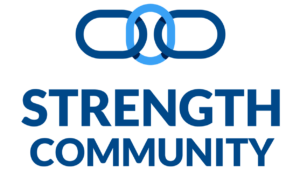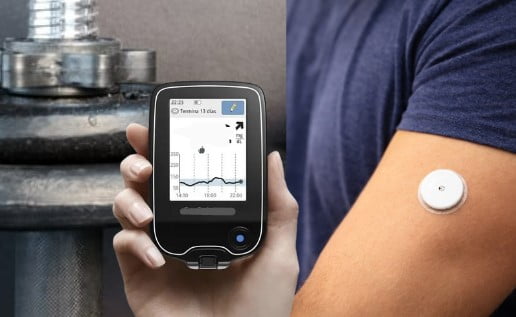My Experience with a Constant Glucose Monitor
To Use or Not to Use a Constant Glucose Monitor
Measuring blood glucose has been around for a very long time, using those devices where you have to prick your fingertip, get a drop of blood, and put it on the testing stripe.
If you buy a good brand of these glucometers, you’ll get accurate results, but you’ll have to be pricking your fingers continuously, which is annoying and painful.
Once, I got one of my fingertips very inflamed.
I played enough with this type of device to get information about my blood sugar levels.
Still, there were missing pieces unless I was willing to prick myself every 15 minutes during the whole day, including during sleep hours, which is not recommended.
Fortunately, now we have the Constant Glucose Monitors (CGM) that you apply, generally on the triceps, and it stays there for two weeks, giving you information about your blood glucose levels every time you want to get a reading.
They also store information, so you don’t have to check every 15 minutes.
It’s important to understand that measuring blood glucose shouldn’t be reserved for those with Type II or Type I diabetes or someone with a related condition. Understanding your blood glucose is relevant for your health.
The application of the CGM
Following the instructions on the box, I applied it to my triceps. Even though the first pinprick was painless, I started to experience some pain and discomfort in my triceps, especially with certain arm positions.
At that point, I remembered that during my previous research on the subject, those devices were designed to measure blood glucose in the interstitial fluid of the body, particularly adipose tissue, not muscle.
The problem was that the fat on my triceps is quite low, so the needle ended up inside my muscle.
Being stubborn and wanting to get exciting information, y left it where it was and started measuring.
The first readings
The first reading I got was extremely high for me – 136 mg/dL – 3 hours after my previous meal, so I guessed there was something wrong with the reading, or my blood sugar dropped, and my body did an important gluconeogenesis process.
I kept measuring for the sake of testing, but I knew that something was off and not on my blood glucose.
After a nice lunch at my mom’s place, which was my re-feed meal, the apparatus showed a reading of 281 mg/dL, which confirmed that it was entirely off.
On that meal, I didn’t eat any high glycemic/insulin load food; nothing was processed, there was no sugar in it, and the amount of food was not high.
The next day I bought a glucometer and calibrated my CGM ranges to understand my blood glucose behavior better. Here is important to note that interstitial tissue has a lag of about 10-15 minutes compared to blood.
The importance of the information acquired
Even though blood glucose is not the ultimate parameter to understand your physiology, it gives some interesting clues to take action on them.
The following information comes not only from my own experience but from numerous clients that have shared with me their logs of the readings. This is far from being an exhaustive list:
- You can understand how your mood and energy levels are related to your blood sugar levels.
- You can relate the activities performed during the day to your blood glucose levels.
- You can find out which foods impact your blood sugar levels more than you want to, and you were not aware of that.
- On the same token, you can find foods that foods you thought might alter your blood sugar levels actually don’t.
- You can check how your blood sugar behaves during and after training, allowing you to take the right actions to reach your goals.
- You will be able to find out what causes a significant blood glucose drop and the consequences of that.
- You can check your blood glucose levels while you sleep and correlate them with your sleep quality and how you feel when you wake up in the morning.
- You can understand the impact that lack of sleep, or sleeping fewer hours than usual, can have on your blood glucose levels during the next day.
- You can realize how stress affects your blood glucose levels.
- All the rest that can be important for you or that you can imagine.
How to make it work for you
First, make sure you put the device in the right place. In general, if your triceps skinfold is 10 millimeters or higher, you’ll probably be fine installing the sensor there.
If you are very lean, try to find a place in your body where the skinfold is around 10 millimeters.
In any case, I strongly suggest you compare the reading of the CGM against a regular glucometer to ensure the information you are getting is accurate.
Get your readings in the moments that are more important for you.
For example, it could be upon awakening, right before a meal, one hour after a meal, 30 minutes after your post-workout shake, etc.
These devices can store readings generally for up to 8 hours, so you don’t need to be getting the readings all the time, and you’ll get the information of your blood glucose while you sleep, which is paramount.
Maintain a detailed journal of the times, your food, activities, training, stress, sleep, etc., to get the most out of it.
The memory can often fail, and you’ll lose essential pieces of information.
Incomplete Information
As I mentioned before, glucose is just one piece of information.
The insulin response to different glucose levels is different for every person, so here, there’s nothing we can assume about insulin behavior.
To better understand our glucose metabolism and physiology, it would be very useful to measure insulin at the same time, but as far as I know, that device still needs to be put on the market.
Actually, if we get a complete constant hormonal profile, we will better understand our endocrine physiology and make better decisions regarding our health. I know I’m dreaming here, but I hope a device like it will soon be developed.
Final thoughts
If you want to improve your health, body composition, muscle mass gains, brain performance, mood changes, etc.,
I strongly recommend getting a CGM and experimenting with it; you’ll find precious and interesting information. Simply ensure it’s properly calibrated to avoid getting wrong readings and making bad decisions.
In my Metabolic Balance class, one of the subjects I teach is how to properly manage insulin and blood sugar to achieve the goals mentioned in the previous paragraph, together with the interactions with other hormones in the body and environmental factors.
Open your mind to experiment and find interesting answers.
Coach Carlos Castro

